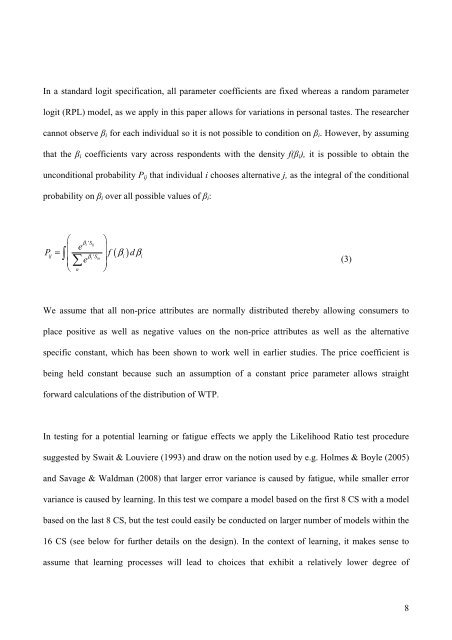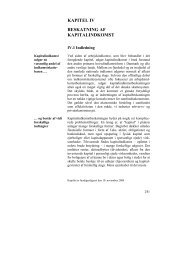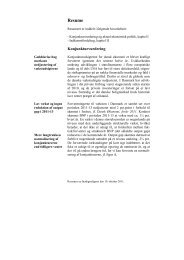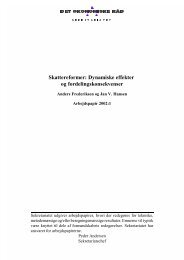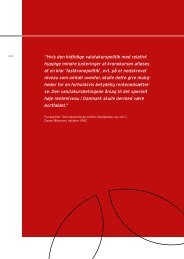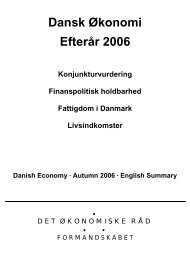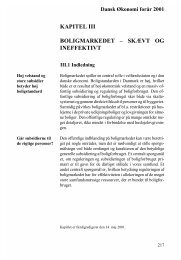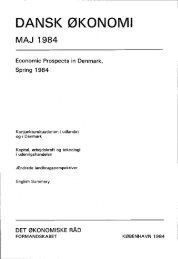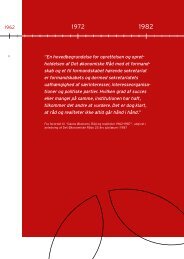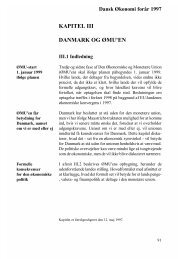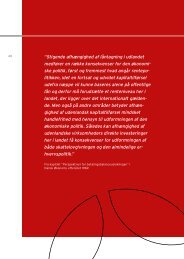The Effect of Learning and Fatigue on Preferences and WTP in a ...
The Effect of Learning and Fatigue on Preferences and WTP in a ...
The Effect of Learning and Fatigue on Preferences and WTP in a ...
You also want an ePaper? Increase the reach of your titles
YUMPU automatically turns print PDFs into web optimized ePapers that Google loves.
In a st<str<strong>on</strong>g>and</str<strong>on</strong>g>ard logit specificati<strong>on</strong>, all parameter coefficients are fixed whereas a r<str<strong>on</strong>g>and</str<strong>on</strong>g>om parameter<br />
logit (RPL) model, as we apply <strong>in</strong> this paper allows for variati<strong>on</strong>s <strong>in</strong> pers<strong>on</strong>al tastes. <str<strong>on</strong>g>The</str<strong>on</strong>g> researcher<br />
cannot observe β i for each <strong>in</strong>dividual so it is not possible to c<strong>on</strong>diti<strong>on</strong> <strong>on</strong> β i . However, by assum<strong>in</strong>g<br />
that the β i coefficients vary across resp<strong>on</strong>dents with the density f(β i ), it is possible to obta<strong>in</strong> the<br />
unc<strong>on</strong>diti<strong>on</strong>al probability P ij that <strong>in</strong>dividual i chooses alternative j, as the <strong>in</strong>tegral <str<strong>on</strong>g>of</str<strong>on</strong>g> the c<strong>on</strong>diti<strong>on</strong>al<br />
probability <strong>on</strong> β i over all possible values <str<strong>on</strong>g>of</str<strong>on</strong>g> β i :<br />
⎛ βi'<br />
S ⎞<br />
ij<br />
e<br />
Pij =<br />
⎜ ⎟<br />
f<br />
'<br />
( βi ) dβ<br />
β i<br />
i S<strong>in</strong><br />
e<br />
⎜ ⎟<br />
⎝ n ⎠<br />
∫ ∑ (3)<br />
We assume that all n<strong>on</strong>-price attributes are normally distributed thereby allow<strong>in</strong>g c<strong>on</strong>sumers to<br />
place positive as well as negative values <strong>on</strong> the n<strong>on</strong>-price attributes as well as the alternative<br />
specific c<strong>on</strong>stant, which has been shown to work well <strong>in</strong> earlier studies. <str<strong>on</strong>g>The</str<strong>on</strong>g> price coefficient is<br />
be<strong>in</strong>g held c<strong>on</strong>stant because such an assumpti<strong>on</strong> <str<strong>on</strong>g>of</str<strong>on</strong>g> a c<strong>on</strong>stant price parameter allows straight<br />
forward calculati<strong>on</strong>s <str<strong>on</strong>g>of</str<strong>on</strong>g> the distributi<strong>on</strong> <str<strong>on</strong>g>of</str<strong>on</strong>g> <strong>WTP</strong>.<br />
In test<strong>in</strong>g for a potential learn<strong>in</strong>g or fatigue effects we apply the Likelihood Ratio test procedure<br />
suggested by Swait & Louviere (1993) <str<strong>on</strong>g>and</str<strong>on</strong>g> draw <strong>on</strong> the noti<strong>on</strong> used by e.g. Holmes & Boyle (2005)<br />
<str<strong>on</strong>g>and</str<strong>on</strong>g> Savage & Waldman (2008) that larger error variance is caused by fatigue, while smaller error<br />
variance is caused by learn<strong>in</strong>g. In this test we compare a model based <strong>on</strong> the first 8 CS with a model<br />
based <strong>on</strong> the last 8 CS, but the test could easily be c<strong>on</strong>ducted <strong>on</strong> larger number <str<strong>on</strong>g>of</str<strong>on</strong>g> models with<strong>in</strong> the<br />
16 CS (see below for further details <strong>on</strong> the design). In the c<strong>on</strong>text <str<strong>on</strong>g>of</str<strong>on</strong>g> learn<strong>in</strong>g, it makes sense to<br />
assume that learn<strong>in</strong>g processes will lead to choices that exhibit a relatively lower degree <str<strong>on</strong>g>of</str<strong>on</strong>g><br />
8


